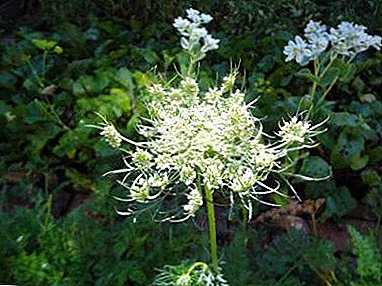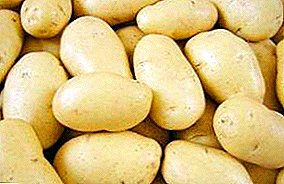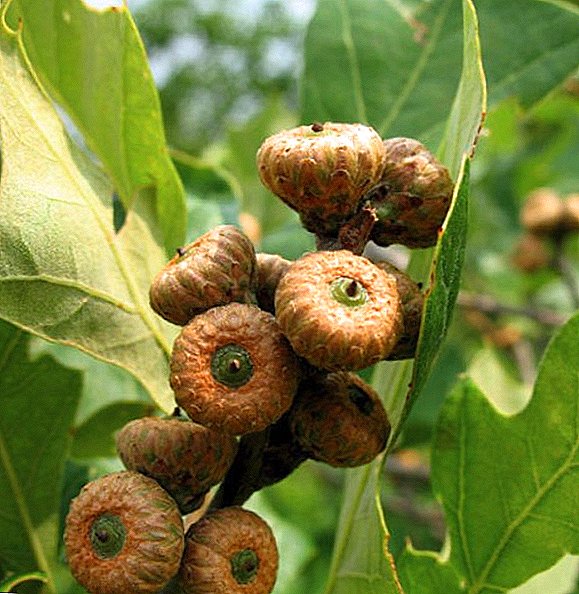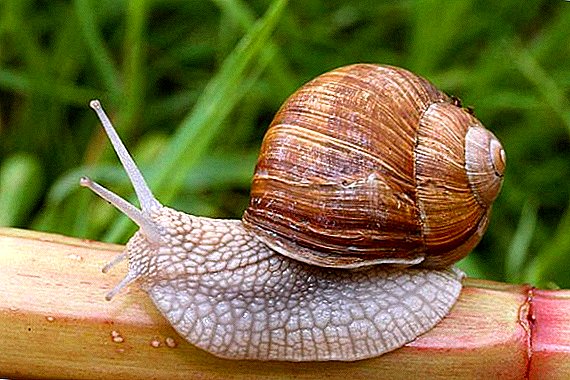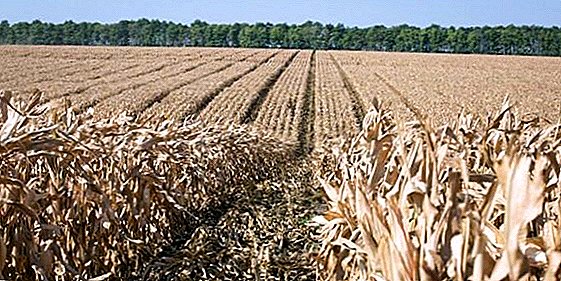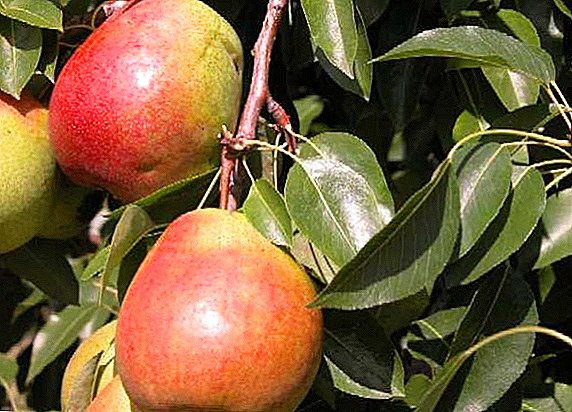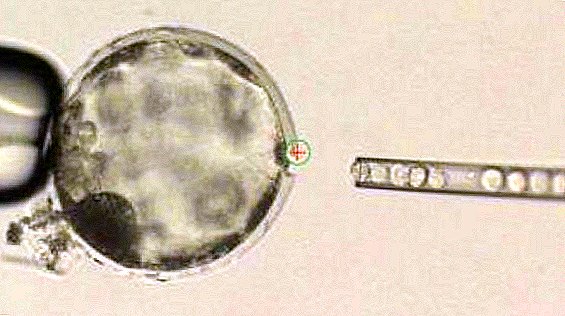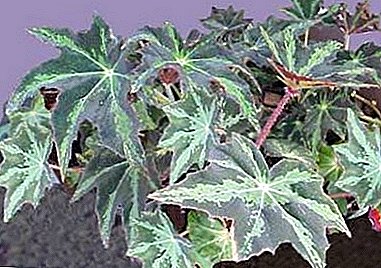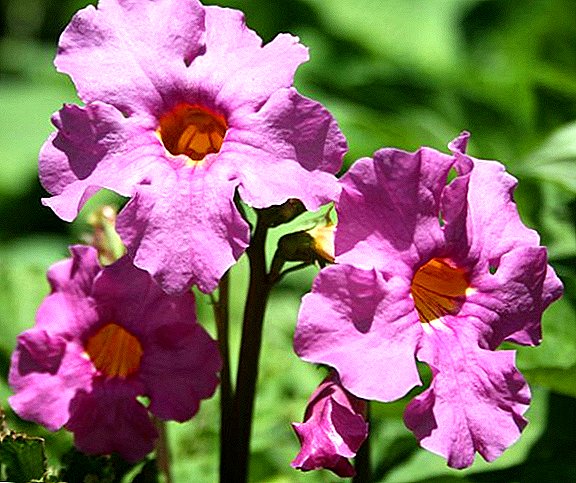 In bouquets of incarvillea are very short-lived - its delicate buds will wither the very next day. But in the garden design she will find a place in any flower bed: at least the border, even the framing of the avenue, even the rock garden, rock arias, mixborders or ordinary rabatka. In any case, this delicate flower will be a bright decoration of your monastery. What is incarvillea in planting and care, how it is grown in open ground, what to do with it in the winter - we will tell about all this later in the article.
In bouquets of incarvillea are very short-lived - its delicate buds will wither the very next day. But in the garden design she will find a place in any flower bed: at least the border, even the framing of the avenue, even the rock garden, rock arias, mixborders or ordinary rabatka. In any case, this delicate flower will be a bright decoration of your monastery. What is incarvillea in planting and care, how it is grown in open ground, what to do with it in the winter - we will tell about all this later in the article.
Botanical description
Incarvillea is a representative of the vast family of the Bignoniums. and includes about 20 varieties. In folk it is called "garden gloxinia". In the wild, the flower is found in the vast Central and Eastern Asia and near the Himalayas. 
Did you know? Despite the Asian origin of the flower, its name has French roots. It was given a new plant about 3 centuries ago in honor of the Parisian botanist Pierre Nicolas Incarville, who discovered many new representatives of flora in China.
Incarvilleia can be grown both as an annual and as a perennial. It has a tuberous or woody root system, roped dark green, feathery leaves and bright paniculate or raceme-shaped inflorescences. The appearance of the plant depends on its type and variety.
This greatly helps gardeners to translate their ideas into reality when creating a landscape garden design. There is something to choose a culture from: there are instances with upright, branched, smooth and shaggy stems, the length of which varies from 30 cm to 2 m.
Bloom garden gloxinia begins in the summer. Its inflorescences consist of single bell-shaped flowers with a tubular corolla. They are purple, scarlet, yellow, pink, purple-violet and white. Opened buds delight the eye for about one and a half months, and then in their place begin to ripen seed boxes with pubescent kernels. You can collect incarvilles from the last decade of August.
Did you know? In the XVIII century in European aristocratic circles there was a fashion for the language of flowers. Gloxinia, which has similarities with incarville, translated from this language meant love at first sight. That is how they characterized this flower in secular circles.
Incarvillea is characterized as a thermophilic and undemanding plant. Some of its species can withstand 15 degrees of frost. In temperate latitudes most often cultivated:
- "Mira" (mairei) - blooms with bright red buds, inside which are yellow spotted corollas;
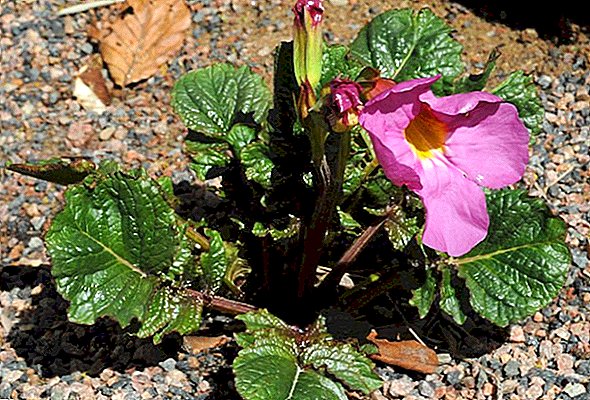
- "Dense" (compacta) - low-growing and winter-hardy type with large purple, white and combined inflorescences, can winter without shelter;
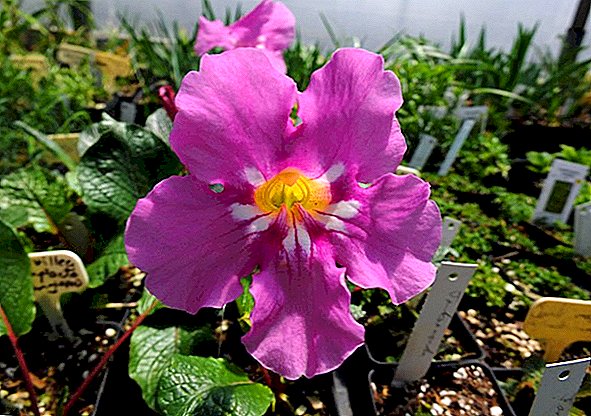
- "Olga" (Olgae) - tall plant, blooms with red-pink buds of medium size;
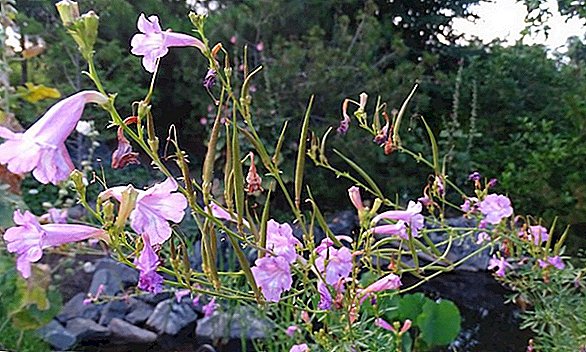
- "Delabey" (delavayi) - has large flowers, the diameter of which reaches 6 cm, there are different colors.
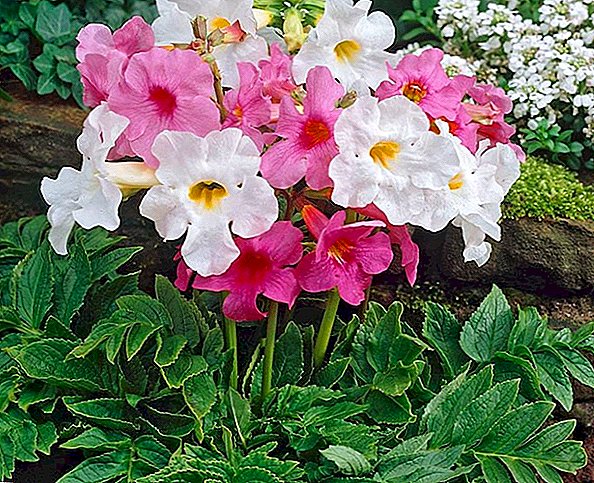
Where to plant a flower?
Species characteristics of the plant dictate their conditions for its location in the garden. To make the flower comfortable, it is important to take into account the amount of light, water and soil features of the site. Otherwise, even winter-hardy specimens may not survive until spring.
Did you know? As the ancient legend says, the bright garden gloxinia gramophones are magical vessels in which night elves once a year prepared the elixir of eternal youth. As soon as the remains of the healing potion dry up, the flower fades. And this happens 40-45 days after the beginning of its flowering.
Bright sun or shade?
Garden gloxinia loves sunny areas and, despite the fragility of delicate inflorescences, can withstand long heat. It also adapts well to partial shade areas, but the lack of ultraviolet radiation is displayed on the flowering period of the crop. Well, if the Asian guest falls into a solid shadow, the colors can never wait.
The main thing for incarville is to cold winds did not blow, drafts, and that its roots did not freeze. Based on these beliefs, experienced flower growers choose elevated zones for the plant, where melt and rain water never gather, and also flows freely during irrigation.
Selecting beautiful and unpretentious perennials for the site should pay attention to rudbeckia, astilba, irises, lupins, hosts, echinacea, peonies, dicentre.
Soil type
For the culture to fully develop, it is important nutrient light land and good drainage. It is advisable to plant a flower on a pre-formed layer of broken brick or crushed stone. The oxidized areas will need to periodically alkalify with lime or dolomite flour. In the absence of these materials, you can use the usual old plaster. Depending on the pH, per square meter of the site will need to make from 150 to 300 g of substance.
Important! Some gardeners dig up the Incarvillea tubers for the winter and store them as gladioli and dahlias. This is done during the period when the flower stems die.
For garden gloxinia, choose fertile, loose soils, otherwise it will develop poorly. Well, if you got a plot on unsuitable loams and sandstones, you will have to correct the situation with a special fertile soil mixture.
Landing features
When grown in seed or vegetative way in the open field and further daily care, incarvillea does not pose any difficulty. Let us see in more detail what a gardener should know and be able to have in order to bloom lush lush flowers on his bed. 
From seed
Experienced housewives who have already dealt with street gloxinia, advised to collect her grains unripe. Because in many cases it happens that they get enough sleep and there is nothing to collect.
Sowing on seedlings is better to plan in March, and in open ground - in May. For the first variant, peat tablets are often used, which are soaked in plastic cups, after which a grain is deepened in them by 1 cm. Considering the fact that the Incarville seed is highly germinating, distribute one specimen into each container. Then cover the container with an identical cup and send in heat.
Important! Incarvilles seedlings take root very poorly and do not tolerate picks.
The second option - growing incarvilles from seeds - is less troublesome, but loses with later flowering periods. Planting material is sown in centimeter grooves directly on the flowerbed. If a stable warm weather with a temperature not lower than 20 ° C has been established on the street, the first shoots will appear in a week.
Cuttings
In the period when the plant reaches the peak of its development, you need to prepare planting material. To do this, cut off about 3-5 cm of the stem from the top. The cut must be oblique.
Then the workpiece is left for several hours in a container with a growth stimulator. The drugs Ekosil, Kornevin and Emistim have proven themselves well. After the done manipulations the stalk is placed in a peat jar, creating greenhouse conditions for it.
Incarvilles planted in this way need to be ventilated every day and ensure that the soil in the box does not dry out.
Dividing bush
This procedure is best done in early spring or autumn. In the second case, it is desirable to have time to land a few weeks before the onset of cold weather. Experts advise not to risk and engage in the division of the bushes of a thermophilic flower in September.
Important! In temperate latitudes, incarvillea does not live in one place for more than 3 years. Consider this fact in time to stock up on seeds. In addition, they can give excellent shoots, even after 3 years lie in storage.
To do this, you need to dig up the entire rhizome, which does not deepen further 15-20 cm, and cut it with a knife with a sharp bayonet spade or knife. At least one sprout should remain on each of them. Planting a new bush, you need to drop the root neck to 3 cm.
Care rules
After the Incarvillea has been planted, and it has successfully settled down, it is important to ensure the correct care of the flower. It consists in timely moistening, top dressing and processing of the soil in a bed. We will understand everything in order.
Watering and soil care
All types of this culture are supporters of moderate moisture. Like room gloxinia, they do not tolerate excess water. It is fraught with rot and death of the plant. Therefore, organize watering as the surface layer of the soil dries. Do not allow its petrification, otherwise the flower will die. Always plan moisturizing treatments in the morning or evening. Otherwise, the sun's rays will burn the plant.
Important! When growing incarvilleas by seedling in the first year, the bush will form only the first pair of leaves. Do not dig a flowerbed with such vegetation. The sense of it will be next season.
Do not forget to loosen the soil after each watering, remove weeds and lay out a layer of mulch. Together, these little things will contribute to improving the nutritional culture and aeration of its roots. Coniferous sawdust and bark are not recommended as mulch, as they increase the acidity of the earth.
Top dressing
This aspect depends on the quality of the soil in the area where the plant grows. If it is fertile, you can do without fertilizer. On poor substrates, it will be necessary several times during the season to make mineral complex substances or to water a flower with a solution of mullein and chicken manure. It is important not to overdo it. After all, an excessive amount of organic matter in the soil will not so much improve your beauty, as it will lower her winter hardiness. This option is suitable for those who grow garden gloxinia as an annual.
Experts advise that fertilizer be sure to be applied when planting delenok and culture transplants.
Did you know? In the East, since ancient times, they firmly believed that Incarvillea brings home happiness, family well-being and success. That is why the plant was desirable not only in the courtyard, but also in the houses.
Transfer
Incarvillele periodically need to replant. This is due to the fact that perennial sucks from the soil all the necessary nutrients for growth. His discomfort in exhausted substrate is noticeable due to slow development and poor flowering.  Transplantation is the impetus for the rejuvenation of the bush. Experienced flower growers advise you to repeat the procedure every 3-4 years. This is done in the second and third decades of March.
Transplantation is the impetus for the rejuvenation of the bush. Experienced flower growers advise you to repeat the procedure every 3-4 years. This is done in the second and third decades of March.
At the new site, it is recommended to carry out a deep digging and put compost or humus on the flowerbed. Then, taking into account the size of the root system of the dug-out flower, make a depression. Its bottom must be filled with drainage, and then pour into the pit mixed in equal parts deciduous land, river sand, peat and some mineral complex fertilizers. After the done procedures, you can plant a flower.
Incarvillea shelter in winter
Incarvillea does not like cold and is very afraid of sudden changes in temperature and snowless winters. That is why many housewives cultivate it as an annual. However, helping the flower to winter is quite real. For this you need to protect its roots with a mulch cover. Florists are advised to make flooring of peat, compost or humus with a layer not lower than 6 cm.
Important! It is desirable to hide young flower bushes for the winter under glass jars or plastic containers. They will become plants reliable protection from the autumn rains and winter cold.
Some summer residents share their experience of successful wintering with a flowerbed of foliage that has fallen down. This should not be done, because the plant under the mulch and so warm, and from an overabundance of protective materials, its roots can obscure.  In the spring, as soon as the snow melts, the mulch needs to be removed from the flower bed. After all, a sharp warming can spoil the roots of the plant charms.
In the spring, as soon as the snow melts, the mulch needs to be removed from the flower bed. After all, a sharp warming can spoil the roots of the plant charms.
Pests and diseases
Improper care, in particular, excessive soil moistening, can provoke fungal diseases of the root system of the garden gloxinia. For her, this is the most dangerous and undesirable phenomenon, since there is little chance of recovering from it. Act immediately at the first sign of rot. In such cases, the plant must be saved by any fungicides. Impeccable reputation among the drugs: "Fundazol", "Topaz", "Maxim", "High".
In addition to this danger, the plant may be threatened by spider mites and mealybugs. They often extend to bushes from other infected plants in a flower garden. You can get rid of parasitic insects with the help of insecticides ("Aktellik", "Aktara", "Bi-58 New").
Important! From the received sunlight proportionally depends on the size and number of inflorescences.
If you take the correct plot for incarvilleia on the flowerbed and at least occasionally pay attention to it - a lush perennial will decorate your garden for a long time.






